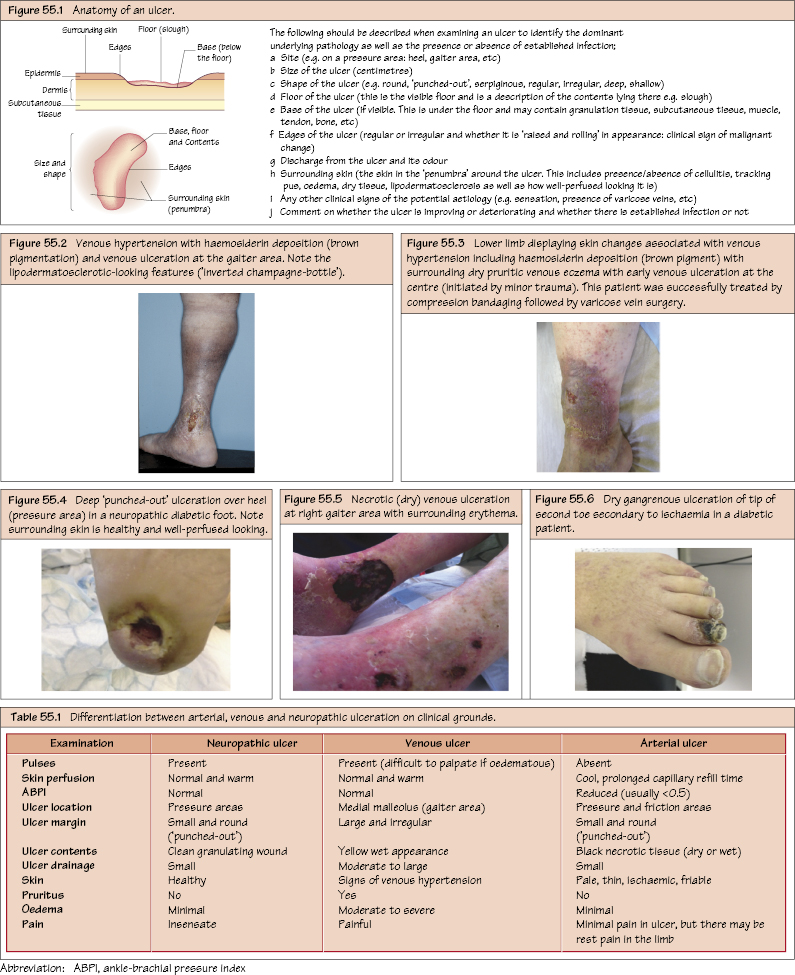Vascular Ulceration Ulceration is an established defect in an epithelial surface. Chronically reduced sensation leaves the limb vulnerable to injury that may go undetected, thereby leading to ulceration at pressure areas (heel, ankle, metatarsal heads). There may be associated chronic joint destruction and malformation (e.g. Charcot’s joint). Decreased or absent sensation in the foot ± decreased vibration sense and joint position sense (if posterior spinal columns affected). If there is no arterial element, perfusion (+pulses) will be normal or even increased because of vasodilatation (associated infection or autonomic neuropathy [both common in diabetes!]). Chronic venous hypertension leads to tissue oedema with venous + capillary congestion and relative tissue hypoxia. The skin is vulnerable to minor trauma or spontaneous breakdown with poor healing ability. Ulceration is large and irregular because the surrounding ischaemic tissue area (penumbra) is large.

Aetiology
Neuropathic Ulceration
Pathophysiology
Aetiology
Clinical
Venous Ulceration
Pathophysiology
Aetiology of Venous Hypertension (VHT)
Stay updated, free articles. Join our Telegram channel

Full access? Get Clinical Tree


